Sourdough Bagels
Note: This recipe was originally posted in June, 2104. I’ve updated it to reflect what I’ve learned in a year of weekly bagel making. It’s much simpler now.
I’ve been playing with sourdough bagel recipes. There’s a ton of variety in both ingredient proportions and methods, so I experimented to find what works for me…and should work for you! I had no idea that bagels are the subject of holy cooking wars. Sheesh, people, lighten up!
Flour and Measurements
The first recipe I tried listed all ingredients in grams, and at the time I didn’t have a scale that was precise enough. I read tirades about how real bakers only measure by weight, not volume, that cups and tablespoons aren’t precise enough, and that measuring in grams is necessary to prevent catastrophic failures. Fortunately, other recipes by mellower bakers use cups and tablespoons. It turns out that you don’t need to be that precise to make great bagels.
The way you measure your flour can make a difference in the amount you need, though. If you scoop your flour into a measuring cup, you will probably need fewer cups than if you spoon the flour. The type of flour you’re using will also affect the amount you need, as will the humidity when you make the bagels. As an experiment, I measured the weight of a cup of the flour I use in grams: it was about 114 grams. Your mileage may vary.
Kneeding
Then, to knead or not to knead; to rise or not to rise. Some recipes let the dough rise for hours, as you would a regular loaf of sourdough bread. Others have you knead several times, letting the dough rise in between. Yet others don’t allow the dough to rise at all. I looked for some theory behind these differences, and found nothing that made sense. I like letting the bagels proof for a couple hours, then leave them in the fridge overnight. That way they’re ready for baking first thing in the morning.
Mixing
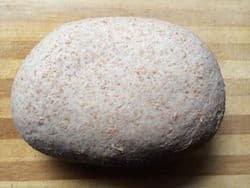
All the recipes I looked at assume you have a stand mixer to mix and knead the dough. I left my big KitchenAid in the US, so I use the food processor with a dough blade. It works to a point. Bagel dough is really stiff, so I mix as much as possible in the food processor and knead in enough flour so the dough is no longer sticky by hand. With my Cuisinart I can add all four cups of flour, then take the dough out and finish kneading with a bit more flour if the dough is sticky.
Shaping
There are two theories about how to shape the bagels. One is to role the dough into a rope, form a circle, and pinch the ends together. The other is to take a ball of dough, pinch a hole in the center, and form the bagel shape that way. At first I was a fan of the rope method, but now I’m pinch-a-hole-in-the-center fan.
Boiling
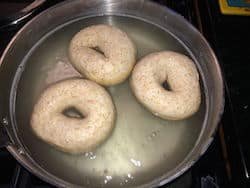
Another item of contention is whether you must use non-diastatic malt powder, either in the bagels themselves or in the water used to boil them. Some say you can’t make real bagels without it. Well, non-diastatic malt powder is not a staple at tiendas in Guatemala, so I took the advice of another recipe and use baking soda in the boiling water.
Some recipes say that when you boil the bagels, they should sink first then rise back to the surface…and if that doesn’t happen your bagels are useless. If they don’t have enough flour or you let them rise to much, they won’t sink. Don’t worry about it–they’ll still be good.
I start my bagels a day before I want to bake them. That includes the time for the sourdough starter to be fed and ferment. (If you don’t have sourdough starter or know someone who can give you some, here’s a site with info on how to make your own.)
This recipe is for whole wheat sourdough bagels with sesame seeds. If 100% whole wheat is too dense for you, replace two cups of the whole wheat flour with hard white (bread) flour. Bread flour is higher in gluten than all-purpose flour.
My other favorite bagels are sourdough rye. Simply replace two cups of the whole wheat flour with rye flour. Add about 2 tablespoon of caraway seeds to the dough before you divide it, and omit the sesame seed topping.
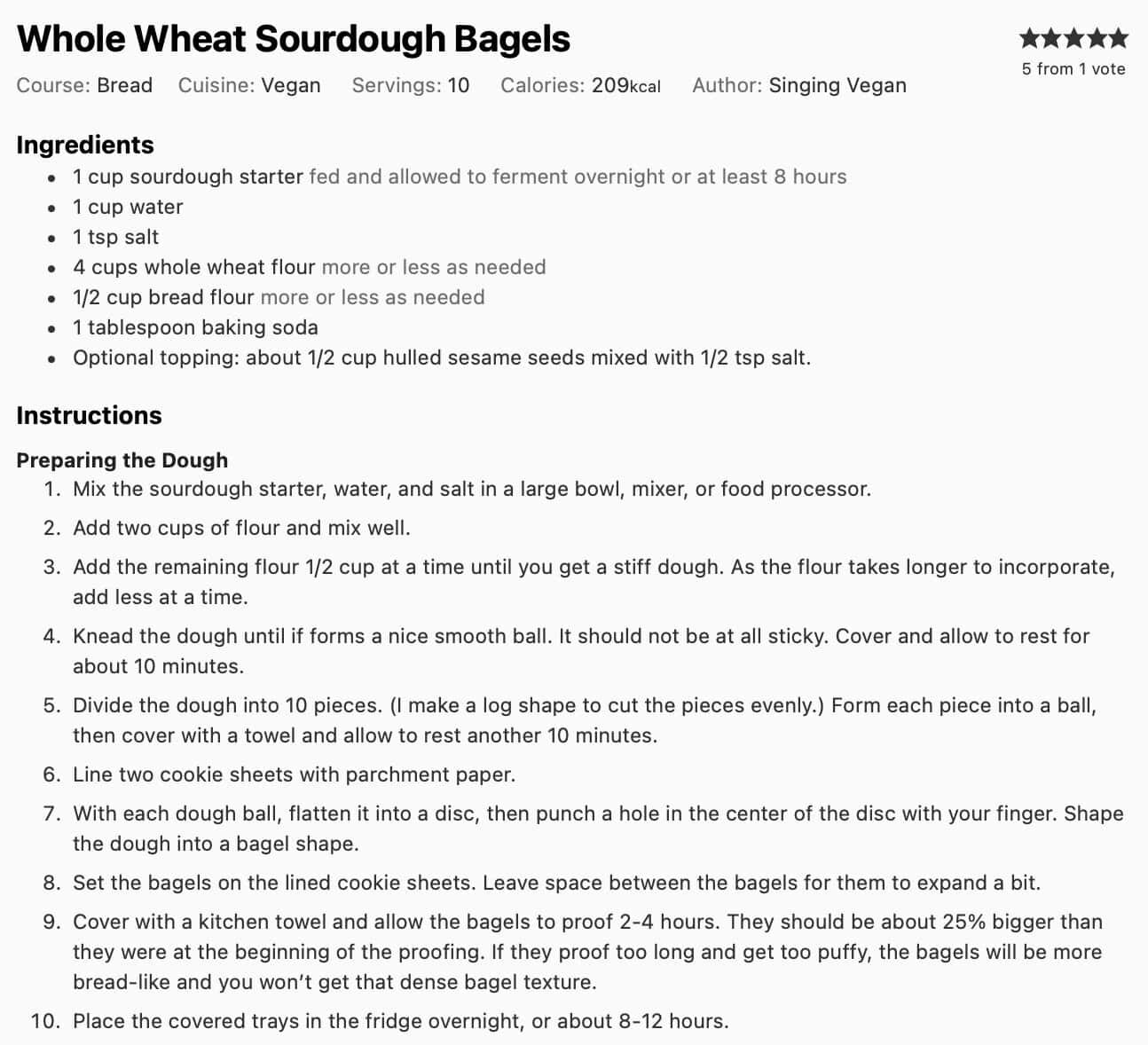
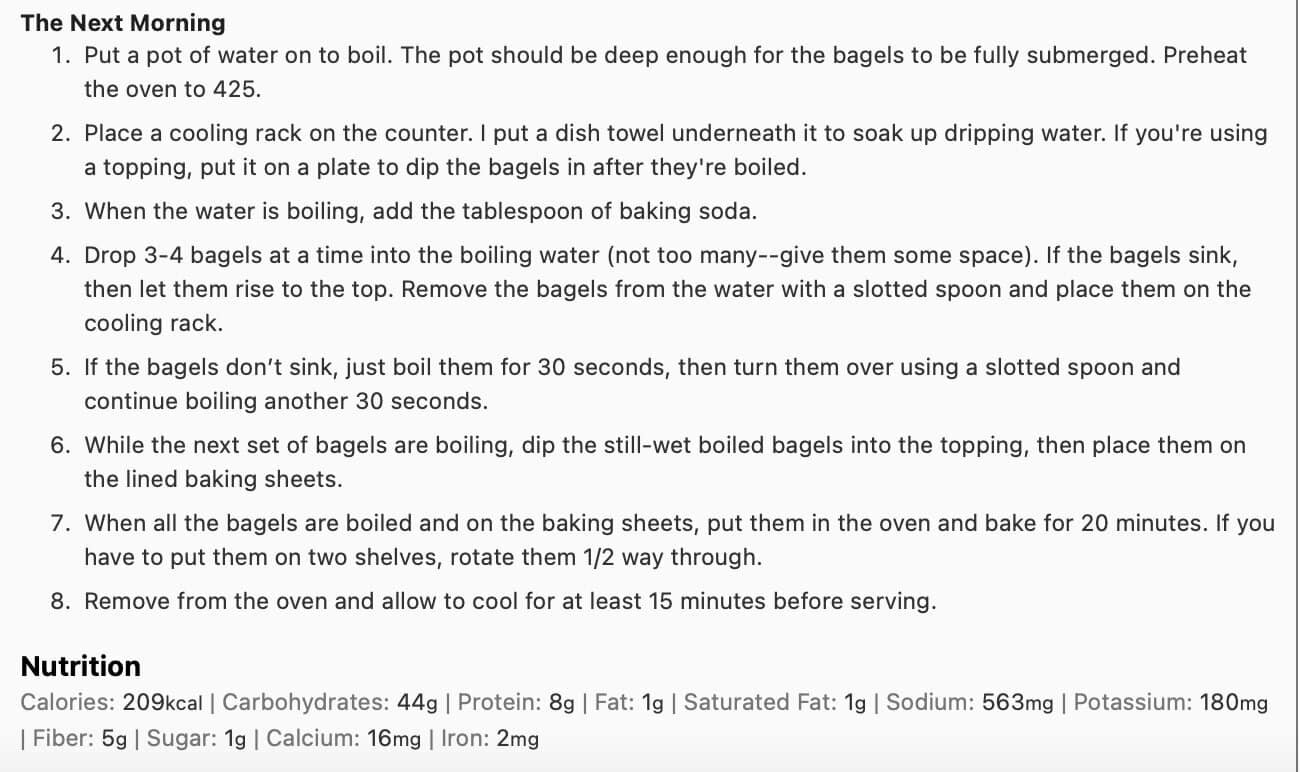
Did you make this recipe? Please rate and review, which helps others find the recipe.
Post your photo to Instagram and tag @singingvegan and hashtag #singingvegan.
Share this post!

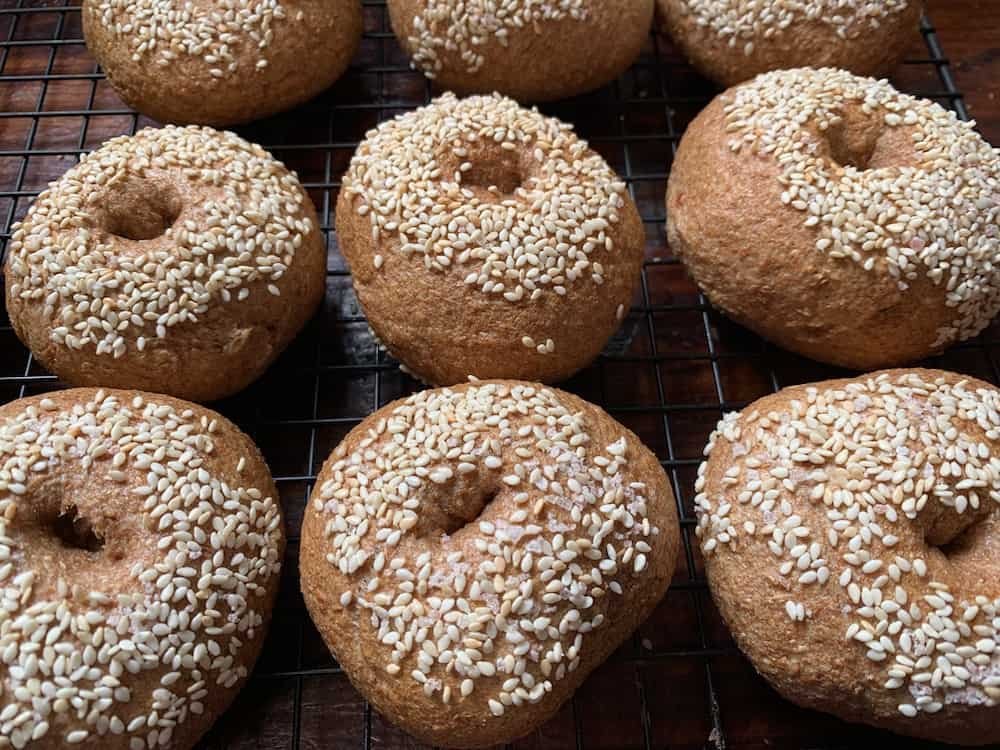
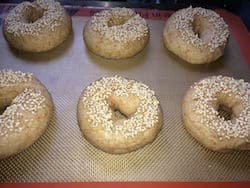
I’m curious if these could be made with sourdough discard and a little yeast… any thoughts on that?
I’ve never tried it, but if you do please let me know how it works!
This was a great recipe! I like to cook with 100% whole wheat, so I was thrilled to find a bagel recipe that was written for that. I turned mine into everything bagels by doing a topping of poppy seeds, sesame seeds, onion and garlic powder, and onion flakes. They really hit the spot! I took mine out of the oven about 2 1/2 minutes early, and they were done just right, but that may have just been because of the temperature of my oven. Thanks for a fantastic bagel recipe!
I’m so glad you enjoyed the bagels! The everything topping sounds wonderful.
Hey, I haven’t finished these yet but I found that there was way too much flour for the recipe? About 3 cups in my dough just didn’t want to mix in any of it no matter how much I kneaded it. Is that normal?
Hi Ashley,
Thank you for your comment. There are many variables to any kind of bread and the amount of flour can change based on the water content of your starter, the specific flour you’re using, and even the humidity in the air. This is also why bakers generally give their measurements in weight instead of volume. In fact, I’m going to update the recipe with measurements in weight.
it was WAY too much flour for me too
How long should it take them to float up? What if they don’t float?
Hi Alexie,
Great question. In my experience, it took about 30 seconds to a minute for the bagels to float up. I’ve never seen them sink and then not float up. If that happened, I’d just take them out after a minute and continue.